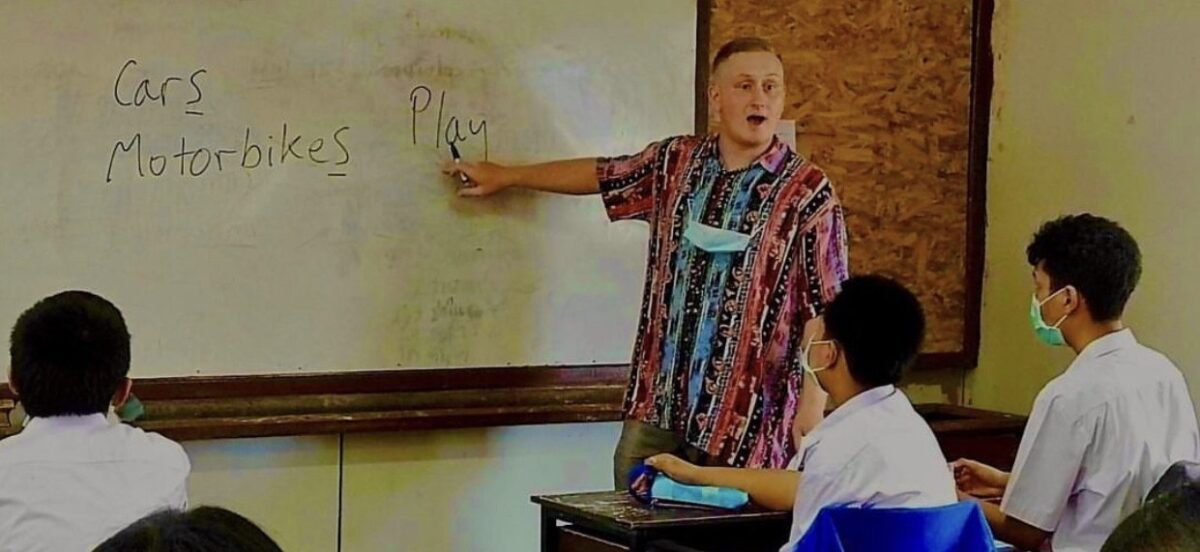By Ken, Teacher in Warsaw
In the last post we looked at how to introduce the student to the lessons and also how to encourage the student to speak more and become more comfortable.
In this blog we will have a look at how to teach and present vocabulary in an engaging and memorable way and build on the introduction. So now the introduction is out of the way, let’s focus more on…..
 Presenting vocabulary
Presenting vocabulary
So If you read the last post on introductions (if you haven’t, you should!) you will know that I demonstrated how to make the vocabulary more personal by referring it to something the student has said previously.
Let’s use the same example, and assume that the lesson is about buying/returning a faulty item online. Also assume that we have just introduced the word “faulty” as part of the introduction. Instead of going through a load of words, I will ask the student,
“Please give me examples of faulty products. How can products be faulty?”
This is a good thing to ask for many reasons:
- It’s an open question. It gets the student to speak and think and increases student participation
- It may turn out that the student already knows some of the words that you need to teach in the lesson which will make it easier to explain the words if needed
- It may cause the student to think of a faulty product that they have had previously (this makes it personal and will make the vocab more memorable)
After that, I will go through any vocabulary that the student is unfamiliar with. With this lesson it would be words like damaged, cracked, torn or any other words that are relevant. I would possibly use pictures and gestures to demonstrate the words, and if I’m teaching face-to-face I might even give the student a piece of paper and ask them to tear the paper. “You tore the paper. The paper is now torn. Clothes can also be torn too” This is a mildly amusing thing and something the student isn’t likely to be expecting. Keeping the students on their toes by varying things is also a great way to make sure your students are always interested.
Practising vocabulary
So now you’ve introduced some vocabulary, and what we need to do next is to practise and make sure the student understands the vocabulary. There are a couple of ways we can do this. If I’m practising the aforementioned vocabulary (or any vocabulary) I would create an imaginary scenario. For example:
“ I dropped a cup. What happened to the cup?” (the cup was chipped/smashed/cracked)
Imaginary scenarios are a great way to practise as once again it gets the student to think for themselves. You could also ask the students questions such as “what else could be smashed/cracked?/ in what other situations could something be scratched?” etc.
To make it more personal, if the student said before that they buy a lot of clothes online, you could also ask them “How can clothes be faulty? Have you experienced any of these faults before?”
If the student is quite advanced, roleplays are also a very good way of practising vocabulary. For this lesson, one person is the customer service rep, and the other person is returning the faulty item and they have to say why they are returning the item (why is the item faulty?) You could even expand the lesson to include refunds and exchanges. If there is time, including additional vocabulary is also quite interesting especially if it is an idiom or a well-known saying or simply different meanings to words.

But what happens if……
The students are not able to practise the vocabulary?
99 times out of 100 the reason the student cannot practise the vocabulary or answer your questions is that you haven’t presented the vocabulary in a way that the student understands. If this happens it might be because it wasn’t clearly presented or even might be because the vocabulary was presented too fast. It is VERY important that the vocabulary is presented clearly and concisely and it comes with practice. My first lessons weren’t that clear but now after teaching 100s of lessons I’m pretty much able to do it in my sleep! You will develop your own style and your lessons will naturally begin to flow better.
Don’t panic, deep breaths. Eat, drink, teach, repeat!
To summarise…….
Presenting vocabulary is all about being able to teach in a varied and engaging manner which will captivate your audience and make them think. Think about when you were at school. Most likely you’ll have had at least one teacher which bored you to death by talking for what seemed like several decades. The general rule is that students should talk for 75-80% of the time in lessons, so if you ask the right questions and present the vocabulary clearly and interestingly you shouldn’t have any trouble! Also, using the vocabulary the student has just learned in future lessons can help also.
If you’d like to see what opportunities are available this year, why not explore our programs page or submit an application?




